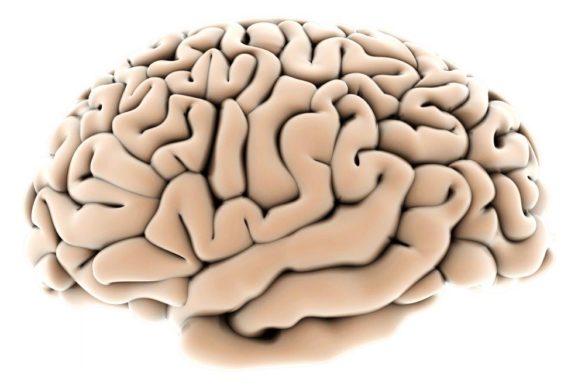presented by Dominika Novak, Viktor Švigelj and Mara Popović
Clinical course:
This forty-year-old electrotechnician was admitted to our hospital because of progressive difficulties in swallowing and walking. He reported being in relatively good health* till approximately June, 2009. There was no history of trauma or travel to exotic places.
He first presented to the emergency unit with a history of fatigue, facial asymmetry, loss of taste, and cramps plus “electrifying sensations” in lower limbs. Right peripheral facial paresis, left deviation of tongue and spastic gait were described; the CT being reported as normal, and CSF abnormal the patient was admitted to the Hospital for infectious diseases, and started on ceftriaxon for suspected Borrelia Burgdorferi (BB) infection. The testing for BB (both in serum and CSF), however, was negative, and he was transferred to neurology on July 27, 2009. By then, he also complained of hoarseness, difficulty in swallowing and walking. He presented with urinary retention, reported spontaneous ejaculations, obstipation and profuse sweating in “cold” legs. On admission, the patient was cognitively intact, anxious and depressed, had a hoarse speech and a spastic gait. Examination revealed right peripheral facial paresis, right soft palate paresis, deviation of the tongue to the left. His neck was supple. Upper limbs were normal. There was a spastic paraparesis with decreased proximal and distal muscle strength, brisk knee and ankle reflexes (left>right), ankle clonus, bilateral Babinski and a sensory level at T 10. There was no spinal deformity or tenderness.
MRI (with contrast) was performed. No brain abnormalities were found; there was hyperintense enhancement (on T2w) of cauda equina (meningeal and radices staining) and conus medularis (Figure 1). Lumbar puncture revealed a high protein level (3 g/l), positive oligoclonal bands in CSF. Lymphocytes (17), a normal level of glucose, and no malignant cells. Laboratory testing revealed some nonspecific abnormalities and was overall non-contributory**. A diagnosis of meningoencephalomieloradiculitis was made.
In addition to the full course of ceftriaxone, antituberculotics were started (120mg riphampicin, 50mg isoniazide and 300mg pyrazinamide), along with 1g of methylprednisolone in intravenous infusion. This caused an allergic reaction, and methylprednisolone 64mg was started orally. There was no lasting clinical improvement.
Diagnostics was continued, but was finally non-contributory***. Further aspects of the clinical picture were defined by additional tests****.
The patient suffered sudden chest pain and dyspnea on August 29, 2009. CT of thorax and CT angiography of pulmonary arteries were performed and revealed atelectasis in left lung base, spontaneous bilateral pneumothorax, and pneumomediastinum. (CT of thorax in July 2009 had been normal). The patient was started on mechanical respiration, and he remained ventilated since then. Tracheotomy was performed in September, 2009.
His vision became impaired; ophthalmological examination revealed macular edema (October 2009), and then papillary atrophy (December 2009). In November 2009 trismus (and progeny) became apparent (with maximal voluntary and passive mouth opening up to 2 cm). In January 2010 oculofacial and perioral dyskinesias appeared. A course of plasmapheresis was performed; high dose IVIG were administered, both without effects.
In March 2010 a pace-maker had to be inserted because of intermittent bradycardia and asystole. In September 2010 spastic paresis of left upper extremity appeared, and bilateral choreiform movements of wrist.
During the course of hospitalization the patient suffered multiple infections, including sinusitis, mastoiditis, epididymitis and several pneumonias, which were treated. He died in April 2011 due to bilateral pneumonia and sepsis.
* Medical documentation revealed that he had been – in 1987, during army service – treated for tuberculous pleuritis. In 2001 and 2002 he was diagnostically evaluated due to enlarged neck lymph nodes. Two biopsies were performed, showing reactive lymphadenitis. The serologic test for B. Henselae was found positive and he was treated for cat-scratch disease. Between 2002 and 2009 there was occasional back pain, dental pain, and headache.
** Laboratory findings revealed elevated serum aspartate aminotransferase 1.21 µkat/l (ref. value <0.58 µkat/l), alanine transaminase 2.23 µkat/l (ref. value <0.74 µkat/l), gama-GT 3.54 µkat/l (ref. value <0.92 µkat/l), alfa-amylase 2.02 µkat/l (ref. value <1.67 µkat/l) and CRP 31 (ref. value <5 mg/L).
The following test results were normal: electrolytes, lipase, erythrocyte sedimentation rate, calcium, phosphorus, uric acid, total protein, albumin, bilirubin, and alkaline phosphatase, complete blood count and coagulation factors, thyroid hormones, rheumatoid factors (ANA, ENA, ANCA), ACE, tumor markers (CA-125, CEA, AFP and CA19-9), tests for sarcoidosis (ACE, TIL2-R, IL6 and TNF). Fresh blood smear search for acanthocytes was negative. Toxicology for Pb, Hg, As was negative.
Lumbar puncture had been repeated many times and high level of proteins (up to 3 g/l) and lymphocytes (up to 17) were found with normal level of glucose, with no malignant cells, and with positive oligoclonal bands in CSF. Cerebrospinal fluid examinations on B. burgdorferi, M. tuberculosis, other bacteria, viruses, fungi, malignant cells and antineuronal antibodies were all negative. Antineuronal antibodies (anti-Hu, Yo, Ri, Tr, CV2, Ma2) and anti-neuropil (performed at the laboratory of Prof. Graus in Barcelona) were negative.
*** Biopsy of the dura of the lumbar region showed non-specific inflammatory changes. Sural nerve biopsy was normal. Biopsy of the sphenoid sinus, of the esophagus and duodenum showed mild non-specific inflammation (October 2009). Biopsy of the small salivary gland of the left lower lip showed no signs for Sjögren’s syndrome. Bone marrow biopsy showed reactive changes. (November 2009).
****EMG demonstrated lower motor neuron involvement in muscles of the cranial, cervical, and lumbar region. Brain and spine MRI were repeated on several occasions, but revealed (apart from sinusitis) no additional pathology (see Fig.1). MR angiography was normal.
PET CT was compatible with inflammation of lower pulmonary lobes (October 2009); FDG-PET compatible with inflammation of the left lower pulmonary lobe (March 2010). Ultrasound showed enlarged liver with diffuse parenchymal disease (May 2010).
Autopsy:
Macroscopic findings: Brain weight was 1490g. Transtentorial, but not tonsillar herniation was present. The brain vessels were unremarkable. At coronal sections both hippocampi and the right parahippocampal cortex were brownish (Figure 2a). The third ventricle and the temporal horn of the right lateral ventricle were moderately enlarged. Tegmentum pontis was atrophic and brownish, tegmentum to base ratio was 1:5 instead of 1:2.5 (Figure 2b). Inferior olivary nuclei were atrophic, too (Figure 2c). Spinal cord was atrophic in the lumbar segments. On cross sections the grey matter was brownish.
Microscopic findings: In both hippocampi the pyramidal cell layer was hypocellular (regarding the neurons), with prominent reactive astrocytosis and activated microglia (Figure 3a). The right hippocampus was somewhat more affected then the left. CA I was the most affected part of the hippocampi (almost without neurons, with additional vessel proliferation (Figure 3b) and gliosis). Similar changes were present in the dentate nucleus, tegmentum pontis, the gray matter of the spinal cord (more in the anterior than in posterior horns). Inferior olivary nuclei were without neurons, with reactive non-hypertrophic astrocytes (an old lesion due to central tegmental tract affection?). In all above mentioned affected regions there were: perivascular lymphocytic cuffing (Figure 3c); microglial nodules (Figure 3d); no neuronophagia; no viral inclusions. The lymphocytes were mostly cytotoxic T (CD8 positive), infiltrating the brain tissue (Figure 3e). CD8 positive lymphocytes were present in the anterior spinal roots, in the one spinal ganglion examined, and in the leptomeninges, where the mononuclear cell infiltrate was focally affecting the walls of the veins (Figure 3f). The spinal cord was severely affected, especially the anterior horns, the anterior – lateral and medial – posterior columns (Figure 3 g, h). Anterior spinal roots were almost without nerve fibers while the posterior roots were almost unremarkable.
Numerous HLA-DR positive microglial cells and macrophages were present in the above described regions (Figure 3i). Cerebellar cortex was focally almost without Purkinje cells, replaced with Bergman’s astroglia, but without inflammation. Some preserved Purkinje cells were hypoxic.
Somewhat milder changes were present in the hypothalamus and the mamillary bodies. There were no changes in the cingular, lateral temporal, sensory motor and insular cortex, in the subcortical white matter of the mentioned regions, in the basal ganglia and the thalamus.
Neuropathological dg.: Meningoencephalomyeloradiculoganglionitis, idiopathic or autoimmune.
Diffuse hypoxic brain injury affecting both hippocampi and cerebellar cortex mostly.
Dominika Novak is Senior Resident in Neurology at the Divison of Neurology,
University Medical Center Ljubljana
Viktor Švigelj is Assistant Professor of Neurology at the Division of Neurology,
University Medical Center Ljubljana
Mara Popovic is Professor of Pathology at the Medical Faculty, University of Ljubljana
Comment by Herbert Budka
Novak et al. report the unusual case of a middle-aged adult with a rapidly progressing bulbospinal syndrome that required mechanical ventilation within 2 months and led to death from pneumonia and sepsis after a total duration of 22 months. All attempts to have a specific diagnosis, and all treatment attempts failed. At autopsy, neuropathological examination demonstrated severe and diffuse inflammatory changes predominantly in the spinal cord, but also in the brainstem and more rostral parts of the brain up to the hippocampi, as well as in anterior spinal roots, a spinal ganglion, and in the meninges. Based on these findings, an autopsy diagnosis of idiopathic or autoimmune meningoencephalomyeloradiculoganglionitis was made.
This dramatic case exemplifies the clinical dilemma of a progressive (encephalo-)myelitis that, despite of our modern diagnostic and therapeutic toolboxes, may be refractory to all attempts to have an etiological diagnosis and rational rather than empirical treatments. Normally, as in encephalitis, clinical diagnosis in myelitis should be based on medical history, examination followed by analysis of CSF for protein and glucose contents, cellular analysis and identification of the pathogen by polymerase chain reaction (PCR) amplification and serology; neuroimaging, preferably by MRI, is an essential aspect of evaluation (Steiner et al 2010). With the advent of antibodies to aquaporin-4 as pathogenic marker in neuromyelitis optica (NMO), a part of myelitic syndromes could be specified, in addition to other inflammatory demyelinating conditions. Other possible aetiologies include viruses, most notably HTLV-I and -II, but also entero-, coxsackie-, polio, flavi- (WNV) and herpesviruses, hepatitis viruses and HIV; bacteria (neuroborelliosis, neurosyphilis, mycobacteria); fungi (aspergillosis); and parasites (toxocara, neuroschistosomiasis), in addition to poorly characterised autoimmune conditions (sometimes associated with hepatitis, vaccinations). HTLV-I-associated myelitis (HAM), also termed tropical spastic paraparesis (TSP), is an interesting chronic retroviral myelitis in which pathogenesis has been disputed to include both direct viral pathogenicity and autoimmunity. HAM/TSP is not confined to tropic countries; seropositivity to HTLV-I has been found also in temperate climes such as Italy. Neuropathology of HAM/TSP is mostly affecting the spinal tracts, whereas involvement of the spinal gray matter predominates in Novak’s case, accompanied by inflammation also in meninges, brain, spinal ganglion and roots, thus suggesting a different viral aetiology. However, it would require very elaborate and wide molecular testing of tissues in order to eventually identify (pro)viral genomic sequences. HTLV-I negative tropical spastic paraparesis is a significant scientific and medical challenge in developing countries that would benefit from such further molecular scrutinity.
Reference
Steiner I, Budka H, Chaudhuri A, Koskiniemi M, Sainio K, Salonen O, Kennedy PG: EFNS Guidelines – Viral meningoencephalitis: a review of diagnostic methods and guidelines for management. Eur J Neurol 17/8: 999-1009 (2010)
Herbert Budka is Neuropathologist at the University Hospital Zurich, Switzerland and Consultant at the Medical University Vienna, Austria










